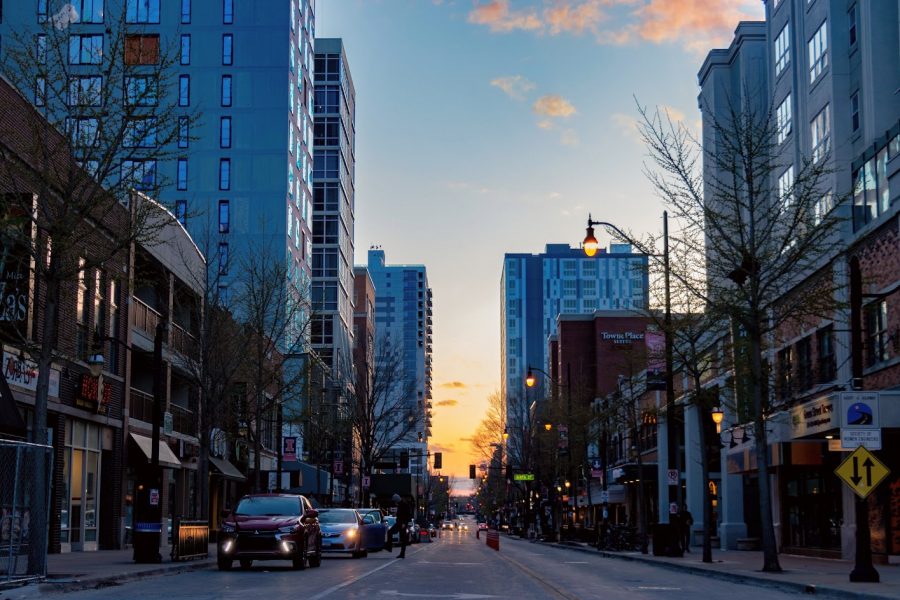CU community takes collaborative approach to police reform
Green Street in Champaign, IL winds down at sunset on April 14.
June 19, 2020
The Champaign County Community Coalition met on June 10, bringing together various community leaders to discuss racism and police reform.
“We’ve had two weeks of anger, frustration, sadness, and the time is right for us to look at this issue as a key moment in time for all of us and our nation,” said Tracy Parsons, City of Champaign community relations manager.
Urbana Mayor Diana Marlin said “the local focus is currently on policing, but we also have to focus on the larger issues of dismantling the inequities and racism that exist in all our institutions.”
Marlin reached out to some employees, asking them to talk about their experiences, but “the anger and the hurt is still too raw,” Marlin said.
One topic covered was discussing white privilege and how they can be allies to the Black community at this time.
Get The Daily Illini in your inbox!
“It really does take the white community to disrupt the systemic racism that plagues our community,” Parsons said.
Minnie Pearson, president of the Champaign National Association for the Advancement of Colored People, also provided recommendations. One included demanding that police departments ban the use of knee holds as an acceptable form of force.
Karen Simms, director of the C-U Trauma and Resiliency Initiative, recommended a trauma-informed lens at community building.
Simms says that this is a collaborative effort in which different groups including local citizens, mental health experts and law enforcement come together to learn from each other and plan.
“It’s those kinds of relationships that make a difference. Where people are building trust but also barrier-busting,” Simms said.
The goals are to understand how modern policing may further trauma, as well as to establish new approaches in public safety. Through this, spaces are created to have long-term conversations about equality and equity.
“One and done isn’t going to work,” Simms said.
In an effort to become more engaged with the community, the City of Champaign has recently created a new web page, which contains information on the policies and procedures of the Champaign Police Department, as well as a “Frequently Asked Questions” section.
According to the site, the CPD’s vision is to advance 21st century policing. This is the concept of building “trust between citizens and their peace officers so that all components of a community … are invested in maintaining public safety in an atmosphere of mutual respect.”
The CPD emphasizes “fostering strong, collaborative community relationships,” in which they have sought input through citizen dialogue and the Champaign County Community Coalition.
“We need to understand going forward that our police officers really need to be held accountable,” Pearson said.







